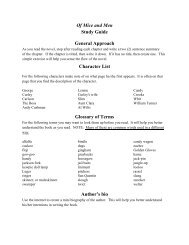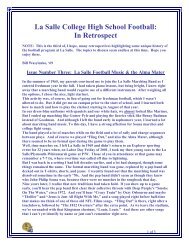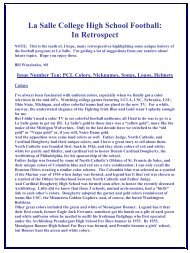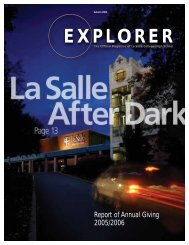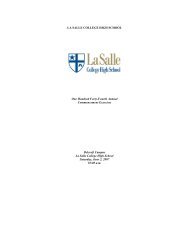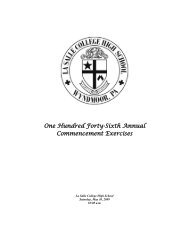10 Days That Unexpectedly Changed America
10 Days That Unexpectedly Changed America
10 Days That Unexpectedly Changed America
You also want an ePaper? Increase the reach of your titles
YUMPU automatically turns print PDFs into web optimized ePapers that Google loves.
<br />
<br />
5) Chapter five is the woeful saga of working class democracy in <strong>America</strong> ‐ its rise and death in <br />
Homestead, Pennsylvania on July 6 th , 1892. One of many ever present tensions in <strong>America</strong>n democracy <br />
took on yet another form; the individual (and collective) rights of workers versus the public good. While <br />
workers joined unions and looked to their government to protect their quality of life, management <br />
looked to government to protect the property rights of business so as to allow prosperity to prevail. <br />
Sometimes it takes decades to discern the significance of a historical event. <strong>That</strong> was not the case <br />
at the Homestead Steel strike. As the brilliance of the second industrial revolution grew brighter, the <br />
already strong alliance between big business and the power of the state doomed any hope that workers <br />
could ‘own’ the factories where they toiled 12 hours a day, seven days a week. The growth of <strong>America</strong>’s <br />
industrial supremacy came at a great cost; the alternative vision of working class democracy was <br />
doomed. <br />
a) ‘The shots fired at Homestead, like the shots fired at Lexington, were heard around the <br />
world…as were the shots fired at Mystic, Connecticut, Springfield, Massachusetts, and the <br />
Battle of Antietam, and no less than the words proclaimed by President Polk on December 5 th , <br />
1848.’ Explain <br />
b) What were the opposing visions of the meaning of democracy articulated by <strong>America</strong>n workers <br />
and industrial owners. How are these ‘visions’ of democracy similar to and different from those <br />
articulated by Daniel Shays and the Founding Fathers? <br />
c) What were the consequences of the coming of the ‘second industrial revolution’ for <strong>America</strong>n <br />
workers. <br />
d) Describe the relationship between big business and government? What was the affect on <br />
organized labor? How did this relationship influence the future of industry in <strong>America</strong>? <br />
<br />
<br />
Terms: <br />
Terrence Powderly <br />
Haymarket Square Riot <br />
Andrew Carnegie <br />
Henry Clay Frick <br />
First and Second Industrial Revolutions <br />
Frederick W. Taylor <br />
‘iron clad’ contracts <br />
Lockout <br />
Coxey’s Army <br />
Pullman Strike <br />
Eugene Debs <br />
<br />
<br />
<br />
<br />
<br />
<br />
<br />
<br />
<br />



